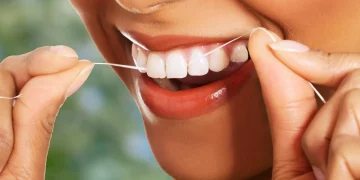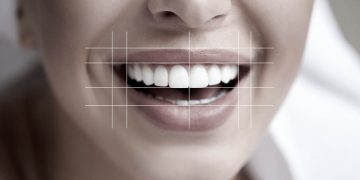Laser technology has brought about a significant shift in many industries, and dentistry is no exception. Over the past few decades, lasers have been increasingly integrated into dental procedures, promising improved precision, reduced discomfort, and faster recovery times compared to traditional treatments. But does laser treatment really live up to the hype? Is it more effective than traditional dental techniques?
In this article, we will explore how laser dentistry compares to traditional dental treatments and delve into the many advantages of using lasers in dental care.
What is Laser Dentistry?
Laser dentistry involves the use of light energy in the form of lasers to treat various dental conditions. Lasers are used for both soft tissue and hard tissue procedures, such as gum reshaping, cavity removal, teeth whitening, and root canal therapy. These lasers produce concentrated beams of light that can precisely target areas in the mouth that need treatment.
Laser treatment in dentistry can be categorized into two primary types:
- Hard tissue lasers (for teeth and bone) are commonly used for procedures like cavity preparation and bone contouring.
- Soft tissue lasers (for gums) are used in treatments such as gum reshaping, frenectomies, and soft tissue biopsies.
How Does Laser Treatment Compare to Traditional Dental Procedures?
1. Precision and Accuracy
- Laser Treatment: One of the key benefits of laser dentistry is its high level of precision. The laser can target only the affected area without disturbing surrounding tissues. This makes procedures like cavity preparation or gum reshaping much more accurate, reducing the risk of damage to nearby healthy tissue.
- Traditional Treatment: In comparison, traditional dental treatments typically involve the use of drills and scalpels. These methods are less precise, and there’s a greater chance of affecting healthy tissue, which can lead to longer recovery times and more discomfort.
Advantage: Laser treatment is often more accurate, leading to fewer complications and better overall treatment outcomes.
2. Reduced Pain and Discomfort
- Laser Treatment: Laser procedures are known for being less painful than traditional methods. The laser beam can vaporize soft tissues with minimal discomfort, and it often reduces or eliminates the need for stitches in many soft tissue surgeries. Additionally, lasers can help seal blood vessels during surgery, reducing bleeding and swelling.
- Traditional Treatment: Traditional treatments, such as using scalpels or drills, often result in more pain and require local anesthesia. After procedures, there may be more discomfort, swelling, and bleeding, especially in soft tissue surgeries.
Advantage: Laser dentistry is generally less painful, reducing the need for anesthesia and promoting a more comfortable experience for patients.
3. Faster Healing and Recovery Time
- Laser Treatment: The precision of lasers not only reduces the trauma to the surrounding tissues but also enhances healing. Since lasers can seal nerve endings and blood vessels, they reduce bleeding and inflammation, speeding up the healing process. Patients often experience less swelling, pain, and a quicker recovery time after laser procedures.
- Traditional Treatment: Traditional dental treatments usually involve a more invasive approach, which can lead to greater damage to surrounding tissue, more bleeding, and a slower recovery process. This can result in longer downtime for patients.
Advantage: With laser treatment, patients typically experience faster recovery with less discomfort, allowing them to return to their daily activities sooner.
4. Minimally Invasive
- Laser Treatment: Laser dentistry is minimally invasive, which means less drilling, less cutting, and minimal discomfort. For example, in cavity treatments, lasers can remove decayed tooth material with high precision, and soft tissue lasers can reshape gums without the need for stitches or scalpel cuts.
- Traditional Treatment: Traditional treatments, such as using drills for cavity removal or scalpels for gum surgery, are more invasive. They often require stitches and may lead to more discomfort and longer recovery times.
Advantage: Laser procedures are more minimally invasive, reducing the need for stitches and promoting faster healing.
5. Reduced Bleeding and Swelling
- Laser Treatment: One of the standout benefits of lasers is their ability to seal blood vessels as they work. This significantly reduces bleeding during and after the procedure, leading to less swelling and a more comfortable healing process. This is particularly beneficial for soft tissue procedures like gum surgeries.
- Traditional Treatment: Traditional methods may cause more bleeding and swelling due to the mechanical nature of drills and scalpels. This can result in longer healing times and discomfort after the procedure.
Advantage: Laser dentistry is highly effective at minimizing bleeding and swelling, contributing to a quicker and more comfortable recovery.
6. Precision in Cosmetic Dentistry
- Laser Treatment: In cosmetic dental procedures, lasers offer unparalleled precision. For instance, lasers can be used for gum contouring, where excess gum tissue is reshaped to create a more aesthetically pleasing smile. Traditional methods for gum reshaping typically require scalpels and may lead to uneven results or excessive tissue removal.
- Traditional Treatment: Traditional techniques for cosmetic procedures are often less precise and may lead to unsatisfactory results in certain cases.
Advantage: Laser treatment is highly precise in cosmetic dental work, improving both the aesthetic outcomes and the patient’s satisfaction.

Advantages of Laser Treatment in Different Dental Procedures
1. Cavity Treatment (Hard Tissue)
- Laser: Lasers can precisely remove decayed tissue and prepare the cavity for a filling with minimal damage to healthy tissue. This also reduces the need for anesthesia in some cases.
- Traditional: Traditional cavity preparation typically involves a dental drill, which can be noisy, uncomfortable, and cause more trauma to the surrounding tooth structure.
2. Gum Treatments (Soft Tissue)
- Laser: Laser dentistry is effective for procedures such as gum contouring, frenectomies (removal of excess tissue from the lip or tongue), and treatment of gum disease. The laser helps to reshape gum tissue with little discomfort and faster recovery.
- Traditional: Traditional gum surgery often involves cutting with a scalpel, requiring stitches and leading to more bleeding and discomfort.
3. Teeth Whitening
- Laser: Laser whitening speeds up the bleaching process by activating the whitening gel applied to the teeth. It often results in brighter teeth in a single session.
- Traditional: Traditional whitening methods require multiple treatments and may take longer to achieve noticeable results.
4. Root Canal Therapy
- Laser: Lasers can be used to remove infected tissue during root canal treatments, offering better precision and less discomfort.
- Traditional: Root canal procedures often involve mechanical tools that can cause additional discomfort and sometimes require longer healing times.
Are There Any Disadvantages of Laser Dentistry?
While laser dentistry offers numerous benefits, there are a few limitations:
- Cost: Laser treatments tend to be more expensive than traditional methods due to the high cost of the equipment and the need for specialized training for dentists.
- Not Suitable for All Cases: Some complex dental procedures, particularly those involving extensive tissue damage, may still require traditional techniques.
- Limited Availability: Not all dental practices are equipped with lasers, so availability may be limited depending on location.
Conclusion
Laser dentistry has made a significant impact on the field of dental care, offering numerous advantages over traditional treatments. With greater precision, less discomfort, faster recovery, and reduced risk of complications, laser treatment is often the preferred choice for many patients and dental professionals alike.
However, the suitability of laser treatment will depend on the specific dental issue, and it is important to consult with your dentist to determine the best treatment option for your needs. While laser dentistry is not a replacement for traditional methods in all cases, its many benefits make it a powerful tool in modern dental care. Whether you’re undergoing a cosmetic procedure, a routine cleaning, or more advanced treatment, laser technology can often provide superior outcomes with a more comfortable experience.













































Discussion about this post